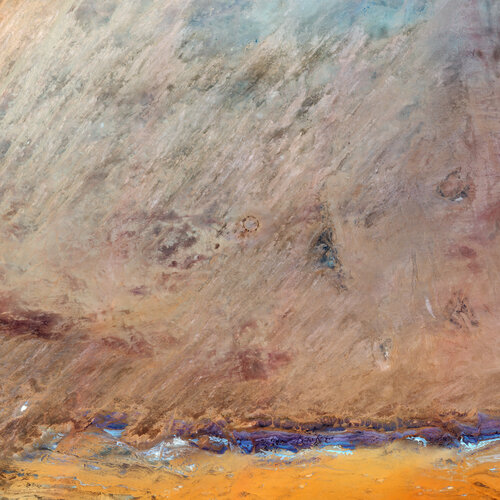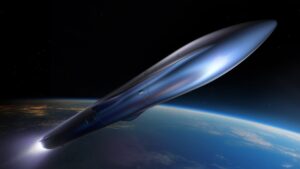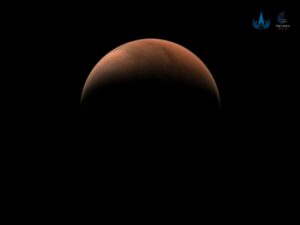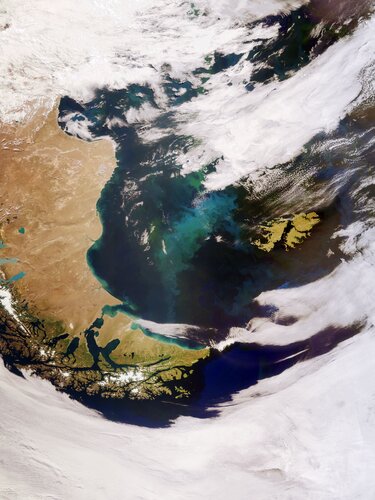Week in images: 27 June - 1 July 2022
Friday, 01 July 2022 12:15
Week in images: 27 June - 1 July 2022
Discover our week through the lens
OneWeb to launch second-generation satellites with Relativity Space
Friday, 01 July 2022 10:52
OneWeb will launch some of its next-generation satellites on Relativity Space’s next-generation launch vehicle starting as soon as 2025, the companies announced June 30.
The post OneWeb to launch second-generation satellites with Relativity Space appeared first on SpaceNews.
SpaceX launches first C-band television broadcast satellite into space for SES
Friday, 01 July 2022 09:14 The first television broadcast satellite under SES's C-band lifted off from Cape Canaveral on Wednesday evening on a SpaceX rocket.
SES, a video and data solutions company, said the satellite will free up the lower 300 MHz of C-band spectrum to ensure the company can provide video and data services to its customers while enabling wireless operators to quickly deploy 5G services across t
The first television broadcast satellite under SES's C-band lifted off from Cape Canaveral on Wednesday evening on a SpaceX rocket.
SES, a video and data solutions company, said the satellite will free up the lower 300 MHz of C-band spectrum to ensure the company can provide video and data services to its customers while enabling wireless operators to quickly deploy 5G services across t Humans in the loop help robots find their way
Friday, 01 July 2022 09:14 Just like us, robots can't see through walls. Sometimes they need a little help to get where they're going. Engineers at Rice University have developed a method that allows humans to help robots "see" their environments and carry out tasks. The strategy called Bayesian Learning IN the Dark - BLIND, for short - is a novel solution to the long-standing problem of motion planning for robots that wo
Just like us, robots can't see through walls. Sometimes they need a little help to get where they're going. Engineers at Rice University have developed a method that allows humans to help robots "see" their environments and carry out tasks. The strategy called Bayesian Learning IN the Dark - BLIND, for short - is a novel solution to the long-standing problem of motion planning for robots that wo Life in the abyss, a spectacular and fragile struggle for survival
Friday, 01 July 2022 09:14 Cloaked in darkness and mystery, the creatures of the deep oceans exist in a world of unlikely profusion, surviving on scant food and under pressure that would crush human lungs.
This extremely hostile environment, which will come under the spotlight at a major United Nations oceans summit in Lisbon this week, has caused its inhabitants to develop a prodigious array of alien characteristics
Cloaked in darkness and mystery, the creatures of the deep oceans exist in a world of unlikely profusion, surviving on scant food and under pressure that would crush human lungs.
This extremely hostile environment, which will come under the spotlight at a major United Nations oceans summit in Lisbon this week, has caused its inhabitants to develop a prodigious array of alien characteristics Lost in space: Astronauts struggle to regain bone density
Friday, 01 July 2022 09:14 Astronauts lose decades' worth of bone mass in space that many do not recover even after a year back on Earth, researchers said Thursday, warning that it could be a "big concern" for future missions to Mars.
Previous research has shown astronauts lose between one to two percent of bone density for every month spent in space, as the lack of gravity takes the pressure off their legs when it co
Astronauts lose decades' worth of bone mass in space that many do not recover even after a year back on Earth, researchers said Thursday, warning that it could be a "big concern" for future missions to Mars.
Previous research has shown astronauts lose between one to two percent of bone density for every month spent in space, as the lack of gravity takes the pressure off their legs when it co Air Force hosts service chiefs to discuss JADC2
Friday, 01 July 2022 09:14 Reemphasizing a critical joint partnership in all-domain warfare, Air Force Chief of Staff Gen. CQ Brown, Jr. met with his fellow service chiefs from the Army, Navy, Marine Corps and Space Force June 24 to share advancements and discuss the way forward as the services work together to continue cultivating common ground on Joint All-Domain Command and Control.
The meeting focused on the Def
Reemphasizing a critical joint partnership in all-domain warfare, Air Force Chief of Staff Gen. CQ Brown, Jr. met with his fellow service chiefs from the Army, Navy, Marine Corps and Space Force June 24 to share advancements and discuss the way forward as the services work together to continue cultivating common ground on Joint All-Domain Command and Control.
The meeting focused on the Def Raytheon demonstrates critical Joint All Domain Command and Control capability for US military
Friday, 01 July 2022 09:14 During the Defense Department's Valiant Shield 22 exercise this month, Raytheon Intelligence and Space, a Raytheon Technologies (NYSE: RTX) business, successfully demonstrated the ability to collect data on a simulated sea-based threat and then share targeting solutions with distributed defense systems across the Western Pacific Ocean - a key test of the company's Joint All Domain Command and Co
During the Defense Department's Valiant Shield 22 exercise this month, Raytheon Intelligence and Space, a Raytheon Technologies (NYSE: RTX) business, successfully demonstrated the ability to collect data on a simulated sea-based threat and then share targeting solutions with distributed defense systems across the Western Pacific Ocean - a key test of the company's Joint All Domain Command and Co AFRL space leader commends team, transitions to new role
Friday, 01 July 2022 09:14 "I'll miss the "ah ha" moments," said Col. Eric Felt, director of the Air Force Research Laboratory Space Vehicles Directorate, who will depart AFRL for an assignment at the Pentagon in July.
Felt became the Space Vehicles director in July 2018 and has a dual-hatted role as commander of AFRL's Phillips Research Site, both located at Kirtland AFB. He will be taking on the job of the directo
"I'll miss the "ah ha" moments," said Col. Eric Felt, director of the Air Force Research Laboratory Space Vehicles Directorate, who will depart AFRL for an assignment at the Pentagon in July.
Felt became the Space Vehicles director in July 2018 and has a dual-hatted role as commander of AFRL's Phillips Research Site, both located at Kirtland AFB. He will be taking on the job of the directo NASA aircraft conducting atmospheric studies over DC to Baltimore
Friday, 01 July 2022 09:14 A NASA aircraft will fly over the I-95 corridor from Washington to Baltimore and Hampton, Virginia, in support of an atmospheric campaign in the mid-Atlantic region between July 5 and 16, 2022.
The four-engine turboprop P-3 aircraft, based at NASA's Wallops Flight Facility in Virginia, will fly five days during the 12-day period at altitudes from 1,000 to 10,000 feet.
Each flight dur
A NASA aircraft will fly over the I-95 corridor from Washington to Baltimore and Hampton, Virginia, in support of an atmospheric campaign in the mid-Atlantic region between July 5 and 16, 2022.
The four-engine turboprop P-3 aircraft, based at NASA's Wallops Flight Facility in Virginia, will fly five days during the 12-day period at altitudes from 1,000 to 10,000 feet.
Each flight dur Researchers measure atmospheric water vapor using open-air spectroscopy
Friday, 01 July 2022 09:14 Researchers have shown that a new mid-infrared spectrometer can precisely measure the ratios of different forms of water - known as isotopologues - in atmospheric water vapor through open air in a little over 15 minutes. Isotopologue ratios, which can be affected by land-based water evaporation and plant transpiration, are used to develop models of climate change and to understand how water is t
Researchers have shown that a new mid-infrared spectrometer can precisely measure the ratios of different forms of water - known as isotopologues - in atmospheric water vapor through open air in a little over 15 minutes. Isotopologue ratios, which can be affected by land-based water evaporation and plant transpiration, are used to develop models of climate change and to understand how water is t The Fingertip Galaxy: Reflecting Euclid in art
Friday, 01 July 2022 08:30 Video:
00:04:21
Video:
00:04:21
“After Euclid’s lifetime, it will just be floating in space. What if future beings found Euclid? How would they know anything about the humanity of the people?” – Tom Kitching, lead scientist of Euclid’s VIS instrument.
The team behind ESA’s Euclid mission has come together to create something special – a personal and collective galaxy-shaped fingerprint painting that has been attached to the spacecraft ready to launch into space. The collaborative nature of the artwork reflects the collaborative nature of the Euclid project overall; in both cases, people have come together to build something unique.
The Fingertip Galaxy was
Venus orbiter, lunar constellation and exoplanets telescopes among candidates as China selects new space science missions
Friday, 01 July 2022 07:02
The Chinese Academy Sciences is preparing to select a new batch of space missions from proposals to study Earth, the Sun and solar system, and the deeper universe as part of a "New Horizons Program.
Earth from Space: Patagonia
Friday, 01 July 2022 07:00
The Copernicus Sentinel-3 mission captured this impressive, wide-angled view of Patagonia at the southern end of South America, as well as the Falkland Islands (Malvinas).
House appropriators reduce proposed budget for FAA commercial space office
Thursday, 30 June 2022 23:40
House appropriators eliminated most of a proposed budget increase for the FAA’s commercial space transportation office while also directing the agency on spaceports and cooperation with another agency on spaceflight investigations.

